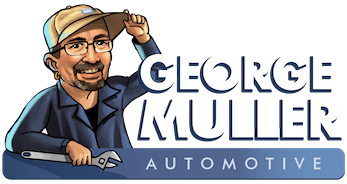Well-maintained brakes will keep you from dying in a horrific car accident. Here’s how you can maintain ’em!
The Classic ‘Apply And Release’ Technique
For everyday driving, an easy way you can reduce wear and tear on your breaks is to apply your brake pedal for a few seconds and then release for a few seconds, then apply again and release again. Almost sounds too simple, right?
Going down a hill while applying your brakes the entire time creates a lot of heat which wears your rotors and brake pads quicker. Extra wear and tear = extra money out of your pocket.
Dad Shifts From 5th Gear To 4th. You Won’t BELIEVE What Happens Next…
Another brake-friendly way to slow down your vehicle is to use your engine. How the heck do you do that? To put it simply, you just shift into a lower gear! You can do this in a standard or automatic car.
Here’s an example:
For Standard Transmissions: you’re exiting a freeway, try shifting out of 5th gear down into 4th gear, then into 3rd gear etc. applying brakes as needed.
For Automatic Transmissions: follow same instructions above, but shift out of Drive down into 3rd or 2nd gear, etc.
You should expect to hear the engine rev much higher as you shift into a lower gear. This is to be expected. As a rule of thumb, if you’re unsure which gear to shift into just pick the next gear down. For example, shifting into 1st gear when you’re travelling at 120km/h is a very bad idea! I’ll have a lot more to fix than your brakes if you do this!
Does this downshift braking wear out your engine more? Marginally, but it won’t cost you any extra money.
Using Your Emergency Brake
If your brakes aren’t working then you have an emergency brake (e-brake) to save your skin.
Your e-brake is fundamentally different from your brake pedal in that it only applies the rear breaks. It’s also a weaker break, so you really only want to use it for emergencies or when parking. OR when doing a super cool powerslide.
How Do Brakes Work Anyways?
You have two types of brakes in your car: hydraulic and mechanical.
Your regular brakes are hydraulic, meaning they’re much stronger (because they’re powered by hydraulic pressure). Your e-brake is mechanical, but weaker.
In most cars, applying the e-brake won’t completely lock your car down or cause you to come to a complete stop. The e-brake will slow you down in an emergency though, which is better than getting thrown through your windshield headfirst.
The Tortoise And The Hare
A useful analogy for brake wear is The Tortoise And The Hare. One of these is better for your brakes, and one is worse (can you guess which one?):
- The Hare: You start quick and stop quick, using more fuel, and your brakes wear out quicker.
- The Tortoise: You drive steady and slow, using less fuel, and less brake wear.
Drive however you like, but now you know the consequences. It could cost you literally tens of dollars for driving like a hare.
